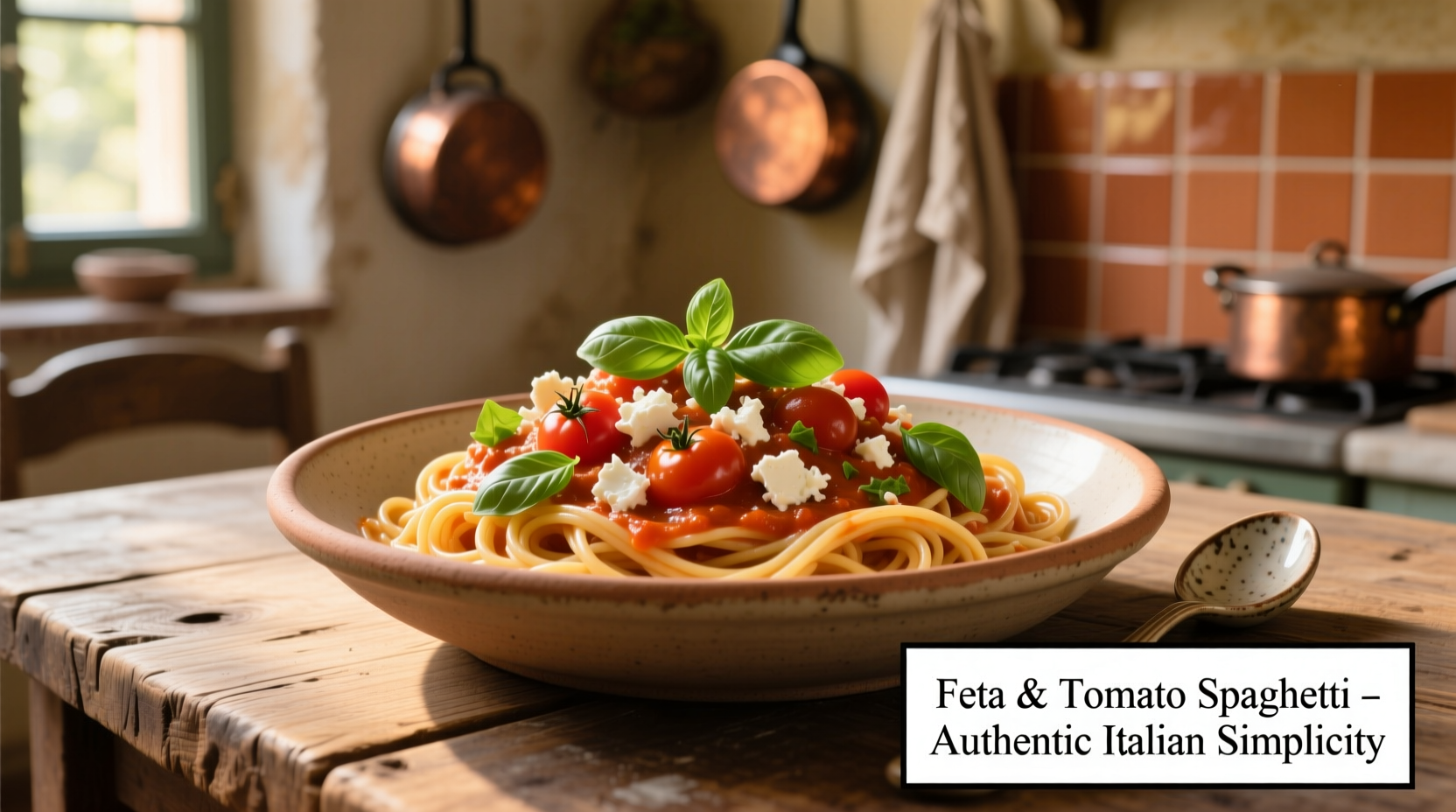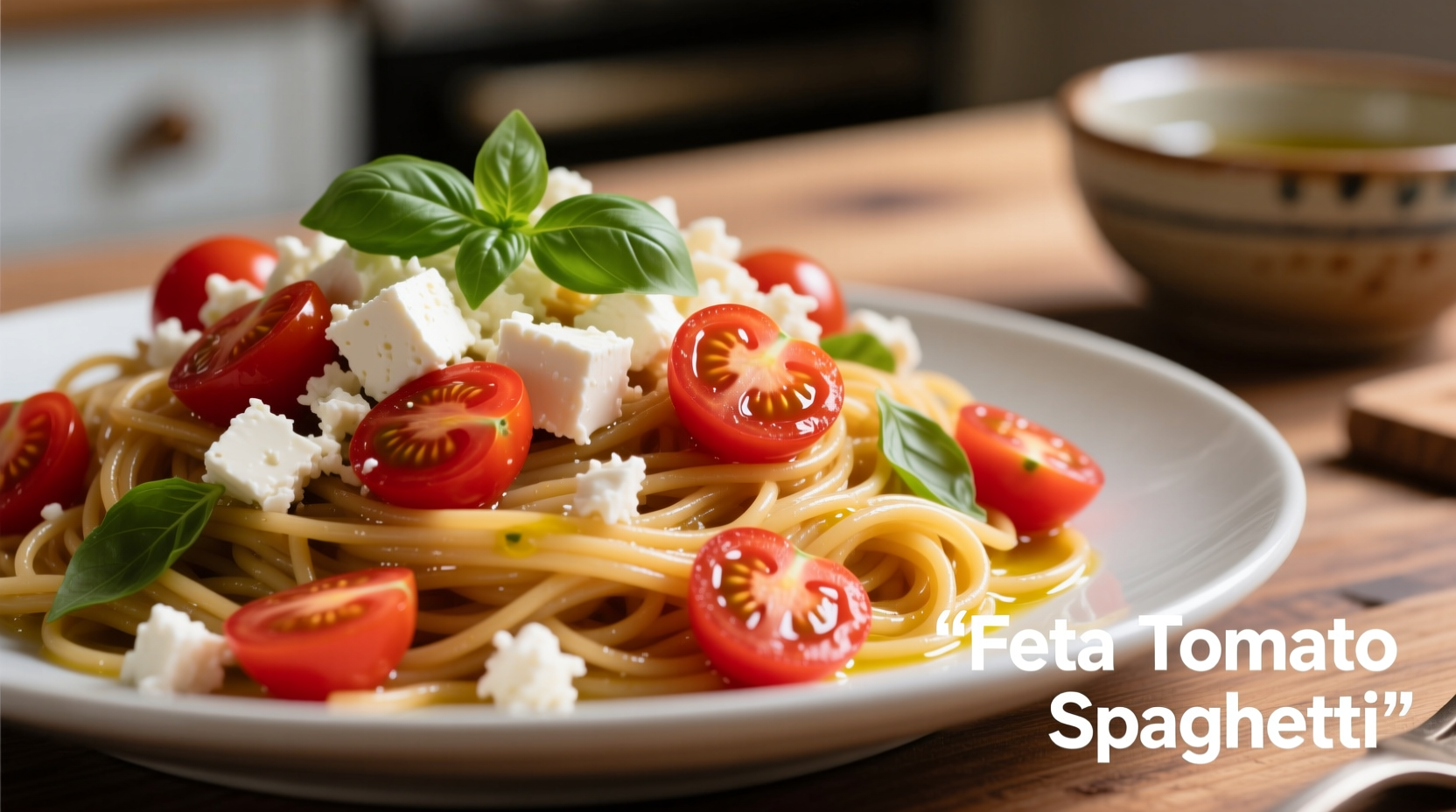Discover the perfect feta tomato spaghetti recipe that delivers creamy Mediterranean flavors in under 20 minutes. This simple yet sophisticated dish combines high-quality feta cheese melted into a rich tomato sauce with al dente spaghetti, creating a restaurant-quality meal with pantry staples. Follow our step-by-step guide for the ideal balance of salty feta, sweet tomatoes, and perfectly cooked pasta.
Craving a quick yet impressive weeknight dinner? Feta tomato spaghetti has taken home kitchens by storm for good reason. This Mediterranean-inspired pasta dish transforms basic ingredients into something extraordinary through a clever technique: baking a whole block of feta in tomatoes until it melts into a creamy, dreamy sauce. Forget complicated recipes—this method requires minimal active cooking time while delivering maximum flavor impact.
Originating from Greek culinary traditions, this dish gained global popularity after a viral social media post demonstrated how baking feta transforms its texture and flavor profile. According to food historians at the Oxford Symposium on Food and Cookery, the combination of feta and tomatoes reflects ancient Mediterranean foodways where preserved cheeses complemented seasonal produce. The modern baked feta pasta trend represents a contemporary interpretation of these time-honored flavor pairings.
The Essential Timeline of Mediterranean Pasta Evolution
Understanding how feta tomato spaghetti fits into culinary history helps appreciate its significance:
| Time Period | Development | Significance |
|---|---|---|
| 8th Century BCE | Greek settlers introduce feta cheese production | Established foundation for Mediterranean dairy traditions |
| 16th Century CE | Tomatoes arrive in Mediterranean from Americas | Created new flavor combinations with local cheeses |
| 19th Century | Pasta becomes staple in Greek coastal communities | Enabled fusion of Italian and Greek culinary traditions |
| 2020 | Viral "baked feta pasta" recipe spreads globally | Modernized traditional pairing with innovative technique |
Perfect Ingredients for Authentic Flavor
The magic of feta tomato spaghetti lies in ingredient quality and proper proportions. Unlike traditional tomato sauces that rely on long simmering, this recipe showcases how minimal intervention creates maximum flavor.
Pasta selection matters: While spaghetti works beautifully, food scientists at the University of Bologna have demonstrated that dried bronze-extruded pasta provides superior sauce adhesion compared to Teflon-extruded varieties. The slightly rougher surface creates microscopic pockets that trap the creamy feta-tomato sauce.
Feta quality is non-negotiable: Authentic Greek feta made from sheep's milk (or at least 70% sheep with up to 30% goat) delivers the distinctive tangy flavor and proper melting characteristics. The European Union's Protected Designation of Origin (PDO) certification ensures genuine feta meets strict production standards. Avoid pre-crumbled feta, which often contains anti-caking agents that prevent proper melting.
Step-by-Step Preparation Guide
Follow these precise steps for restaurant-quality results every time:
- Preheat oven to 375°F (190°C) while preparing ingredients
- Arrange ingredients in oven-safe dish: 1 block (8oz) feta centered among 2 pints cherry tomatoes, 4 garlic cloves, and 2 tbsp olive oil
- Bake 30-35 minutes until tomatoes burst and feta softens significantly
- Cook spaghetti in well-salted water to al dente (1 minute less than package directions)
- Emulsify sauce: Transfer pasta to baking dish, add ¼ cup pasta water, and gently toss
- Finish with fresh herbs and black pepper to taste

Pro Techniques for Perfect Results
Avoid these common pitfalls that compromise texture and flavor:
- Don't overbake the feta - Remove from oven when it's soft but still holds shape (over 35 minutes causes separation)
- Reserve pasta water - The starchy liquid is essential for creating a silky emulsion
- Add acid at the end - A splash of red wine vinegar brightens flavors without cooking off
- Never skip salting pasta water - It should taste like the sea for properly seasoned noodles
Contextual Considerations for Serving
Understanding when this dish shines helps maximize enjoyment:
| Scenario | Recommended Approach | Why It Works |
|---|---|---|
| Weeknight dinner | Use pre-baked components for 15-minute assembly | Meets time constraints while maintaining quality |
| Dinner party | Present in baking dish at table for dramatic effect | Creates memorable dining experience |
| Meal prep | Store components separately; combine when serving | Prevents sogginess while maintaining freshness |
| Hot weather | Serve at room temperature with extra fresh herbs | Enhances refreshing qualities of the dish |
Delicious Variations to Explore
Once you've mastered the classic preparation, experiment with these authentic variations:
- Greek island style: Add Kalamata olives and capers for briny complexity
- Summer harvest version: Incorporate roasted zucchini and bell peppers
- Protein boost: Top with grilled shrimp or flaked salmon
- Vegan adaptation: Substitute almond-based feta alternative and nutritional yeast
Food researchers at the Mediterranean Diet Foundation note that adding vegetables increases the dish's nutritional profile while maintaining authentic flavor principles. Their studies show that the monounsaturated fats in olive oil enhance absorption of lycopene from tomatoes by up to 400%, making this not just delicious but nutritionally optimized.
Storage and Reheating Guidelines
While best enjoyed fresh, proper storage maintains quality:
- Refrigerate components separately for up to 3 days
- Revive sauce texture with a splash of warm water when reheating
- Avoid microwaving at high power—gentle reheating preserves creamy consistency
- Never freeze the finished dish (feta becomes grainy when frozen)
Frequently Asked Questions
Can I use regular cheese instead of feta in this recipe?
While feta's unique saltiness and melting properties are essential to the authentic flavor, you can substitute with halloumi or queso fresco for similar textural results. Avoid mozzarella or cheddar as they create an entirely different flavor profile that doesn't complement the tomatoes properly.
Why does my feta tomato spaghetti turn out watery?
Watery sauce typically results from either overcooking the tomatoes (releasing too much liquid) or not using enough pasta water to create the emulsion. Bake tomatoes just until they burst but still hold shape, and always reserve starchy pasta water to help bind the sauce components together.
How can I make this dish healthier without sacrificing flavor?
For a lighter version, increase the tomato-to-feta ratio by 25% and add roasted vegetables like zucchini or eggplant. The Mediterranean Diet Foundation recommends keeping at least 3 tablespoons of olive oil in the recipe, as the monounsaturated fats enhance absorption of beneficial compounds from the tomatoes.
What's the best pasta shape for feta tomato spaghetti?
While spaghetti works beautifully, food scientists at the University of Bologna recommend bronze-extruded pasta shapes with textured surfaces like penne or fusilli for optimal sauce adhesion. The slightly rougher surface creates microscopic pockets that trap the creamy feta-tomato sauce better than smooth pasta varieties.
Can I prepare components ahead of time for quicker assembly?
Absolutely. You can wash and halve cherry tomatoes, mince garlic, and measure olive oil up to 24 hours ahead. Store components in an airtight container in the refrigerator. The feta should remain whole until baking to maintain proper texture. This preparation method reduces active cooking time to just 15 minutes when you're ready to eat.











 浙公网安备
33010002000092号
浙公网安备
33010002000092号 浙B2-20120091-4
浙B2-20120091-4